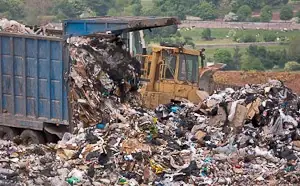Compostable Trays Made of Wheat
Today’s market has grown to be very environmentally aware. Companies have begun to provide green packaging alternatives to fill this need-gap in the marketplace. With all the changes in the packaging world, a slew of new terms are out there – from compostable to biodegradable to bioplastic. It’s hard to keep them all straight and understand the nuances between them. More than that, for the average consumer it can be confusing to understand which is the most Eco-friendly options. This article explores these terms and hopes to shed light on current Eco-conscious opportunities.
“Biodegradable” and “Compostable”

Compostable Trays, Made of Wheat
If you hark back to high school geometry, you may remember that while every square is a rectangle, not every rectangle is a square. This concept is very similar to the differences between the terms “biodegradable” and “compostable. While everything that is compostable is biodegradable, not everything that is biodegradable is compostable.
Most compost facilities require decomposition between 90 and 180 days. For packaging to be classified as compostable, the American Society for Testing and Materials (ASTM) has dictated three criteria to be met:
- Biodegrade – the packaging component must break down into carbon dioxide, water, and biomass at the same rate consistent with known compostable materials, such as paper (cellulose)
- Disintegrate – decomposition occurs, such that the packaging is not visually distinguishable in the compost
- Eco-Toxicity – the biodegradation does not produce any toxic materials and can support plant growth
Technically, many items can be considered biodegradable because there is no time requirement. For example, an apple core will biodegrade in 1 – 2 months, but it takes an aluminum can 80-200 years to biodegrade in a landfill. Unlike compostable plastics, there is no universal definition or certification for the marketing claim “biodegradable”. However, the biggest difference between these two terms is the ambiguous decomposition time. Therefore, it is better to focus on the more specific term of compostability.
Bioplastics
Bioplastics are plastics in which all or part of the carbon makeup is derived from renewable feed stocks, like corn or cellulose. Like the terms biodegradable and compostable, biobased plastic does not equal biodegradable. It’s possible for 100% biobased plastics to be non-biodegradable and 100% fossil-based plastics to be biodegradable. Yet, compared to their more conventional counterparts, biobased plastics save fossil resources by being annually replenished.
Recycle Everything Possible!

Landfill, Biomasspackaging.com
Space in landfills is becoming more scarce as municipal solid waste (MSW) generation increases. Containers and packaging make up the largest portion of MSW – almost 30%, or 72 million tons. Of the materials that are routinely disposed of in landfills, 70% could be recycled. Recycling these products, like plastic, metals, and paper, can not only reduce the amount of waste disposed in landfills, but preserve our limited sources of nonrenewable raw materials.
It’s key to properly dispose of biodegradable, compostable, and all other recyclable materials as this can have huge benefits for the environment. From taking less time to break down to being made from completely renewable resources to decreasing carbon emissions, these packaging structures offer today’s consumers an opportunity to be more Eco-conscious and businesses to provide the right solutions for their customers and the planet.


2 Comments
Packaging Machines
Very Nice Blog, Very Helpful Thanks to you I can make Better Choices for my Packaging Machines.
Clare Firn
Thank you for stopping by! Let us know if you have any packaging questions – we would love to help in any way we can.